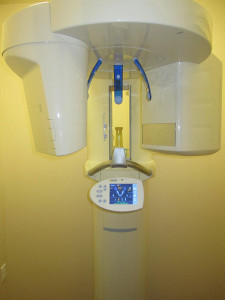From the inception of modern dentistry and for a full century afterwards, dentists relied solely on 2-D imaging technology with respect to evaluating, diagnosing and treating their patients. Though the benefits of being able to see what is going on inside the mouth via a digital image are far greater than using eyesight alone. Prior to the development of x-rays, doctors had no choice but to base their treatment recommendations on what they could physically see, and many times this meant failing to accurately determine a patient’s needs and treat them the right way.
The Rise of 3-D Imaging
Since the turn of the millennium, however, 3-D imaging technology has allowed dentists to examine teeth from every direction, which virtually gets rid of human error. The only way to cure an ailment is determine with certainty that it is present, and that is what 3-D imaging guarantees. By knowing exactly what is going on inside a patient’s mouth, dentists are better equipped to recommend cleaning regimens and even make dental implant placements more precise.
Why It Matters
With 3-D, it is now possible to get pinpoint measurements about jawbone density, thickness and height, as well as where underlying nerves are located. This helps the dentist find the right space to place the implant in the least invasive way. Given that a full, panoramic view is afforded, this also means a wide range of dental procedures can be completed in less time. When doctors have a clear idea of what they are working with, the operation (whatever that may be) can be facilitated accordingly.
How 3-D Imaging Works
Another benefit to 3-D digital imaging is that it does not require any special preparation. The process is performed while the patient is sitting in the examination chair, and basically entails a quick scan with a cone-shaped beam of x-rays. Once the scan is completed, the digital images are automatically generated on the computer. The dentist can view them within a few seconds, rather than having to wait for a hard-copy printout, which traditionally required patients to schedule a follow-up visit or at the very least make them wait while the prints were being developed.
The convenience of 3-D imaging means the diagnosis and treatment phases can be carried out in the same session, allowing better communication between doctor and patient.

